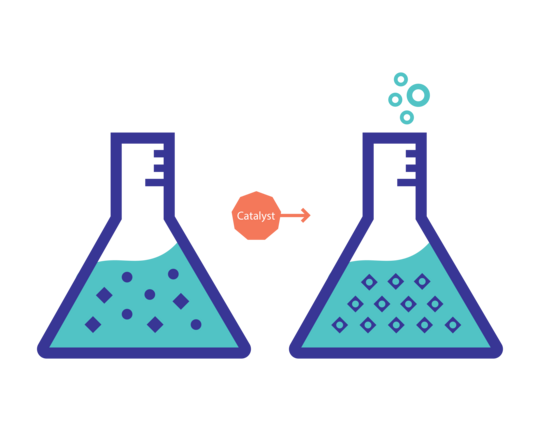
Consider the following scenario: Your boss has a meeting with her board chair, and she leaves with a mission. She locks eyes with you in the hallway. “Hey,” she asks gingerly, “how is our innovation strategy coming along?”
You panic.
You rattle off some disjointed team accomplishments that might qualify as innovative and assure her you’ve got it covered. You’ll definitely have a cohesive plan prepared for the board meeting next quarter. Definitely.
Innovation is hard, so it’s no surprise that mid-to-large size companies often struggle to create deliberate innovation plans. To do so requires a clear vision about where the company needs to be in three to five years and an honest assessment of whether your current trajectory will take you there. Even if you can conjure the vision, the “how” part can remain fuzzy, stymieing even the most dedicated innovation evangelists.
One of the fastest ways a company can make the “how” tangible is through outsourcing certain challenges to startups. Why not? Your company already seeks outside expertise for technical challenges, market analysis and creative projects. Think of startups as external innovation experts. By no means should you outsource your entire innovation strategy to startups — instead, consider engaging startups in a way that makes sense for your business.
Traditional ways of engaging with startups can be fraught. Depending on your company’s industry, size and reputation, you may have one of two problems: 1) a line of startups chomping at the bit to pitch about how they are the cure for all that ails, and you don’t have the time to manage a selection process, or 2) although you get the occasional cold email, you don’t know where to start to engage a startup meaningfully, bring them up to speed and help them deploy solutions. Even before a contract is signed, you must gather your stakeholders to evaluate a potential engagement and subject the startup to what may be a crushingly long road to an agreement.
There’s a better way: you need a catalyst.
If it’s been a few years (decades?) since your last chemistry lesson, here’s a pain-free refresher on catalysis:

Your company and a range of promising startups are all floating around in the same ecosystem soup. You’ll occasionally bump into each other by sheer force of entropy, and you might interact in some ways at a low frequency, but those interactions are unlikely to yield meaningful results.
Enter the catalyst. Catalysts lower the energy barrier required for two reagents to interact, smoothing a lower-friction pathway that enables the creation of something new.

Somewhere between starched-shirt management consulting and hoodie-clad startup guru, the ideal catalyst is deeply ingrained in the startup ecosystem locally and nationally. Perhaps, like Render, the catalyst is dedicated to impact in their own ecosystem, continuously investing in the long-term health of Main Street businesses, startups and larger companies, motivated by the high-impact potential for their communities when all businesses thrive.
The catalyst’s role is to curate the most promising corporate-startup match for strong impact and make the startup-corporate interaction as frictionless as possible for both parties. The goal is to perform a fast, low-cost experiment that creates a big impact in a short timeframe. If designed skillfully, the experiment will yield valuable results regardless of outcome:
- Did the engagement fail to reach key milestones? Disengage from the startup with minimal loss and maximum learnings in hand to inform your next steps. In the meantime, you’ve exposed your team to startup culture, new people and perspectives, new ways of thinking, and perhaps a renewed passion for the problems you’re solving. Although it may be a disappointment, this situation isn’t entirely a loss for the startup, either: despite the fact that you were their top priority, they didn’t count on your contract to sustain their operations for the next eight months. They are able to take their experience and use it to improve their product. Depart as friends.
- Did the engagement result in milestone achievement? Bravo! Explore ways to engage more deeply: is this a partnership that endures? Does it make sense to acquire this startup? Is it more strategic to create a joint venture and explore other market opportunities with this startup? Your catalyst can help guide you through this decision-making.
- Did something altogether unexpected and wonderful happen? That’s serendipity, and that’s magic. Congratulations, you are winning, and you and your startup partner will continue to reap the rewards of your partnership, whatever its form, for years to come.
So next time your boss launches a hallway innovation request, have a narrative that puts your company at the forefront of your industry in a three-to-five-year timeline. You’ve got the vision, and with the aid of your catalyst, a roadmap to perform a series of low-cost, high-impact quick experiments for maximum impact. Innovation accomplished.
If you are wondering what catalyzing innovation could look like for your organization, get in touch. We would love to partner with you to unlock new ideas for impact. Contact Render.


